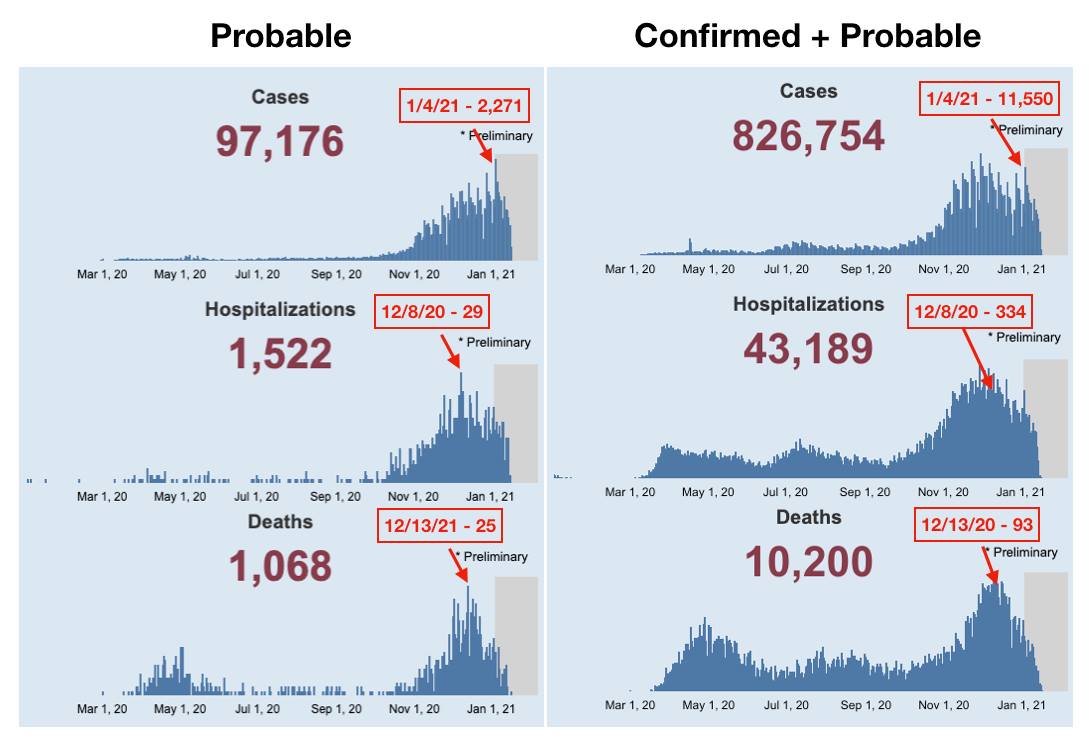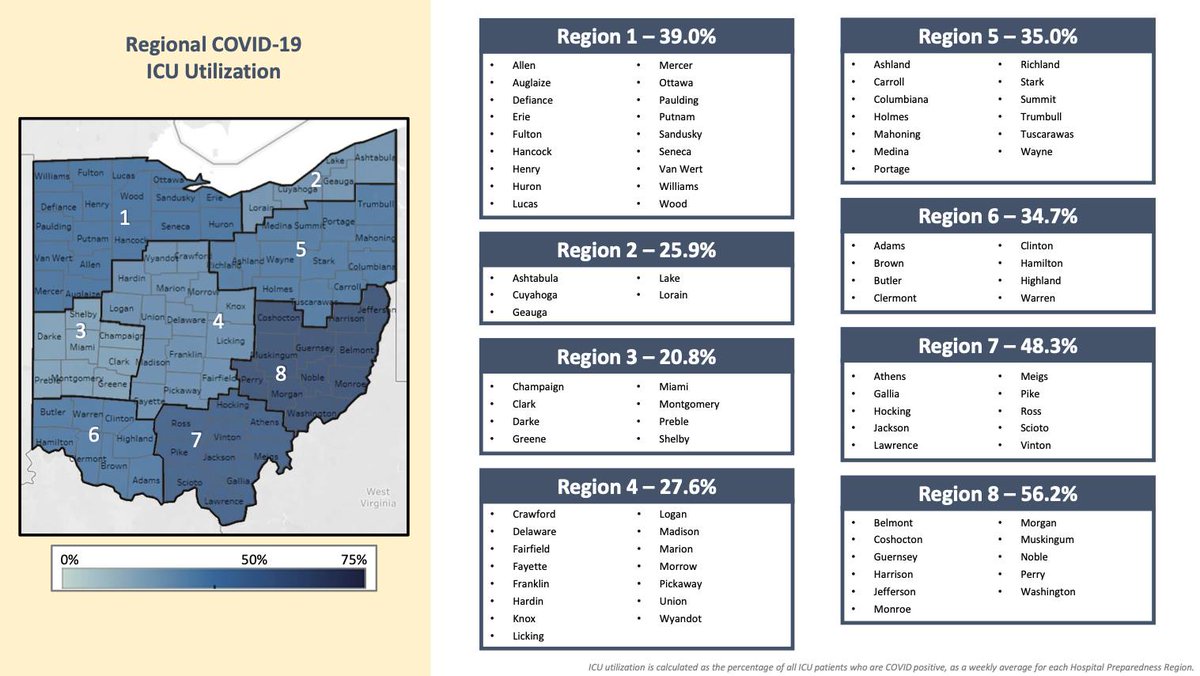
So here's something interesting about our latest 'surge'. If one goes to coronavirus.ohio.gov/.../covi.../da… you can toggle between 'confirmed' cases, 'probable' cases and both of them together.
So what is a 'confirmed' case? That would be any laboratory confirmed 'case' - any positive PCR, antigen or antibody test, with all the issues of false positivity and hypersensitivity and non-infectiousness that go along with all of those tests.
A 'probable' case does not even have a positive test result associated with it. All it requires are symptoms. Maybe an epidemiological link. We are now in the middle of what used to be referred to as 'flu season' when there is a wide variety of respiratory illnesses that exist -
- and are passed around, creating symptoms in individuals that count under one of the 44 symptoms of 'COVID' in Ohio.
⭐️⭐️⭐️ So how big of a deal are the probable cases in Ohio? On the left are just the 'probable' cases/hospitalizations/deaths. On the right are the total assigned cases/hospitalizations/deaths - 

the numbers that are reported daily and are being used to continue to increase anxiety and destroy lives. I have labeled the peaks of the probable data, and labeled the corresponding day for the total side.
⬇️⬇️⬇️⬇️⬇️⬇️
19.7% of January 4th's 'cases' were probable.
8.7% of December 8th's hospitalizations were probable.
26.9% of December 13th's deaths were probable.
19.7% of January 4th's 'cases' were probable.
8.7% of December 8th's hospitalizations were probable.
26.9% of December 13th's deaths were probable.
⬇️⬇️⬇️⬇️⬇️⬇️⬇️
Nearly 10% of ALL deaths are considered 'probable' - meaning there was no laboratory confirmation that the deceased even had the virus when they died or during their life at any point.
Nearly 10% of ALL deaths are considered 'probable' - meaning there was no laboratory confirmation that the deceased even had the virus when they died or during their life at any point.
The comparison of the cases graph is also interesting. Notice that the total cases rose and fell from the end of October through mid-December, just as all of our data shows. But then we have had a more recent 'spike.'
On the probable side of things, there was no wave visible in November/December. Instead we see a steady increase in cases that are being considered probable. That is, cases that DO NOT have an associated positive test result of any sort.
⭐️⬇️⭐️⬇️⭐️⬇️
Nearly 1/5th of our newest 'peak' cases have NO positive test result associated with them.
They are just based off symptoms. In the middle of flu season.
#InThisTogetherOhio
Nearly 1/5th of our newest 'peak' cases have NO positive test result associated with them.
They are just based off symptoms. In the middle of flu season.
#InThisTogetherOhio
• • •
Missing some Tweet in this thread? You can try to
force a refresh




